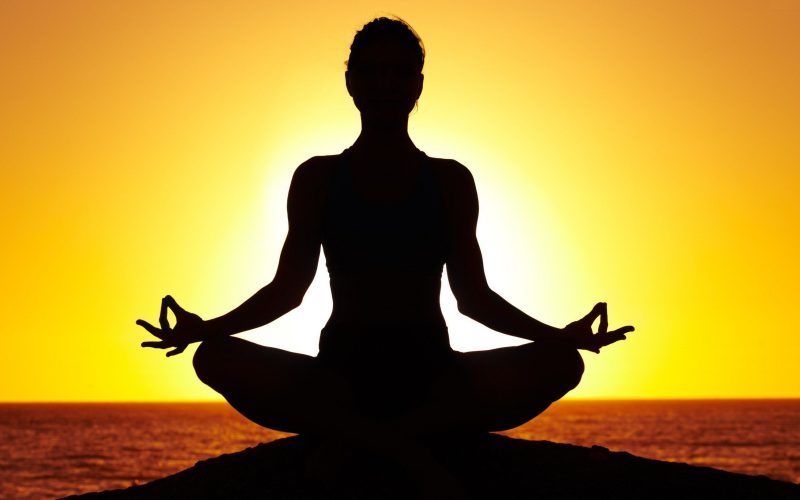Introducing Sarah, Your Yoga Guide
Sarah Jones is a certified yoga instructor with over ten years of experience. Witnessing countless individuals transform their lives through yoga, Sarah is passionate about sharing its power. Having battled her own struggles with stress and anxiety, she discovered yoga as a powerful tool for cultivating inner peace and emotional well-being. Sarah believes that yoga is accessible to everyone, regardless of age, fitness level, or previous experience.
Unwind Your Mind: Yoga’s Path to Mental Wellness
Imagine this: you come home after a long, stressful day. Your mind races with worries, your shoulders are tense, and a knot of anxiety sits heavy in your stomach. Sound familiar? If you’re like countless others, the pressures of daily life can take a toll on your mental health. Fortunately, there are effective ways to combat stress, anxiety, and low mood, and yoga can be a powerful tool in your wellness journey.
The Science Behind Yoga’s Magic
Yoga’s benefits for mental well-being are backed by a growing body of research. Here’s how yoga works its magic:
- Stress Reduction: When you’re stressed, your body releases cortisol, a hormone that can wreak havoc on your health. Yoga’s focus on deep, mindful breathing activates the parasympathetic nervous system, the body’s relaxation response. This counteracts the effects of cortisol, promoting feelings of calm and lowering stress levels.
Example: Imagine yourself practicing a simple breathing technique called “alternate nostril breathing.” Close your right nostril with your thumb and inhale deeply through your left nostril. Hold your breath for a beat, then exhale slowly through your right nostril while closing your left nostril with your ring finger. Repeat on the other side. This simple practice, done for just a few minutes, can significantly reduce stress.
- Improved Mood: Yoga stimulates the release of mood-boosting neurotransmitters like endorphins and serotonin. These chemicals play a crucial role in regulating emotions and promoting feelings of happiness and well-being.
Example: Picture yourself flowing through a series of gentle stretches and sun salutations. As you move your body with your breath, you might feel a sense of warmth and a lightness in your mood. This is due to the release of endorphins, often referred to as the body’s natural “feel-good” chemicals.
- Reduced Anxiety: Anxiety is characterized by excessive worry and fear. Yoga’s calming practices, including focused breathing exercises and mindful movement, can help regulate the nervous system and reduce the symptoms of anxiety.
Example: Consider yourself practicing a pose like “child’s pose” (balasana). In this calming posture, you rest your forehead on the ground, knees bent and arms extended alongside your body. This gentle pose encourages deep breathing and relaxation, helping to quiet a racing mind and ease anxiety.
- Enhanced Sleep Quality: Do you struggle with falling asleep or staying asleep? Yoga can be a powerful tool for improving sleep quality. The relaxation techniques practiced in yoga help quiet the mind and prepare the body for restful sleep.
Example: Imagine yourself winding down for the night with a short, restorative yoga practice. These practices involve holding gentle poses for extended periods, often with the support of props like bolsters and blankets. This allows your body to completely relax, promoting better sleep throughout the night.
- Increased Self-Awareness: Yoga cultivates a deeper connection to your body and breath. As you move through poses, you become more attuned to your physical sensations and emotional state. This self-awareness allows you to identify stress triggers and develop healthy coping mechanisms.
Example: Picture yourself holding a balancing pose like “warrior II” (virabhadrasana II). As you focus on maintaining your balance, you might become aware of a tendency to tense your shoulders when stressed. This awareness empowers you to take conscious steps to relax those muscles when stress arises in daily life.

Beyond the Physical: The Power of Mindfulness
While yoga offers undeniable physical benefits, its true power lies in its emphasis on mindfulness. Mindfulness is the practice of paying attention to the present moment without judgment. By cultivating a more mindful approach to life, you can learn to detach from negative thoughts and worries, promoting inner peace and emotional resilience.
Getting Started with Yoga for Mental Wellness
Ready to embark on your yoga journey? Here are some tips to get you started:
- Find a Style that Suits You: There are many yoga styles, each offering a unique approach. Here are a few popular options:
- Hatha Yoga: A gentle introduction to yoga, focusing on basic postures and breathing techniques. Perfect for beginners.
- Vinyasa Yoga: A more dynamic style that synchronizes movement with breath, creating a flowing sequence. Ideal for those seeking a more challenging practice.
- Restorative Yoga: A calming practice that utilizes props like bolsters and blankets to support the body in gentle poses for extended periods. Excellent for stress relief and improved sleep.
- Yin Yoga: Targets connective tissues and deep muscles by holding passive poses for several minutes. Promotes flexibility and mindfulness.
- Start with Online Resources: Numerous free online yoga resources can guide you through basic postures and breathing techniques. Platforms like Yoga Journal (https://www.yogajournal.com/) and DoYogaWithMe (https://www.doyogawithme.com/yoga-classes) offer free video tutorials and class options for all levels.
- Join a Beginner’s Class: Consider attending a beginner’s yoga class at a local studio. This allows for personal guidance from a qualified instructor and a supportive environment. Many studios offer introductory packages at affordable rates.
- Listen to Your Body: Yoga is about self-discovery, not competition. Don’t push yourself beyond your limits. Focus on proper alignment and take breaks whenever needed.
- Make it a Habit: Consistency is key! Even a short daily yoga practice, as little as 10 minutes, can make a significant difference in your mental well-being.
Build Your Own Yoga Routine
Here’s a sample 10-minute yoga routine to get you started:
- Warm-up (3 minutes): Begin with gentle neck rolls, shoulder circles, and arm swings to prepare your body for movement.
- Sun Salutations (3 minutes): Flow through a few rounds of sun salutations (surya namaskar) to increase blood flow and warm up your muscles.
- Standing Poses (2 minutes): Hold basic standing poses like Warrior II (virabhadrasana II) and Triangle Pose (trikonasana) for a few breaths each, focusing on balance and alignment.
- Seated Poses (2 minutes): Transition to seated poses like Downward-Facing Dog Pose (adho mukha svanasana) and Child’s Pose (balasana) to stretch your hamstrings and spine and promote relaxation.
- Cool-down (2 minutes): End your practice by lying in Corpse Pose (savasana) for a few minutes, allowing your body to fully rest and integrate the benefits of your practice.
Remember, this is just a sample routine. Feel free to adjust it based on your needs and preferences. As you gain experience, you can explore more challenging poses and build a personalized practice that supports your mental well-being.
Final Thoughts
Yoga is a powerful tool for managing stress, anxiety, and low mood. Its combination of physical postures, breathing exercises, and mindfulness cultivates inner peace and emotional resilience. Remember, consistency is key. Even a short daily yoga practice can significantly improve your mental well-being. So, take a deep breath, unroll your mat, and embark on your journey to a calmer, more centered you with yoga!










